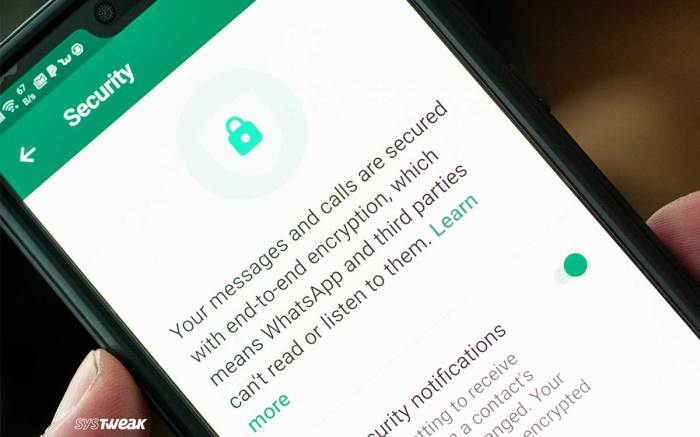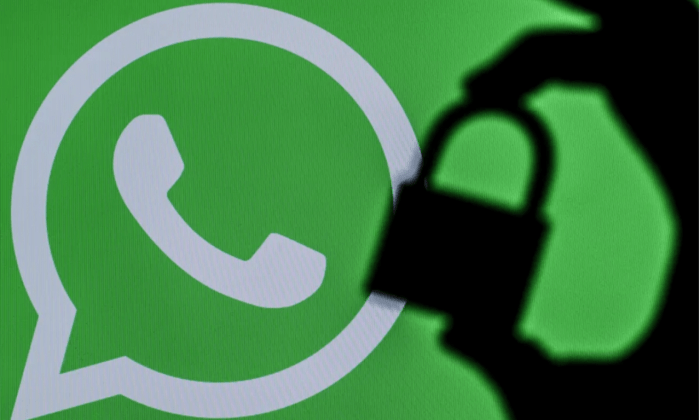In the digital age, protecting our privacy is more important than ever. WhatsApp, one of the most popular messaging apps worldwide, offers various privacy settings to help users control who can access their personal information and communications. Understanding these settings is crucial for safeguarding your privacy and ensuring a secure messaging experience.
This guide will delve into the essential WhatsApp privacy settings you need to be aware of, providing clear explanations and practical tips to help you optimize your privacy protection. From managing profile visibility to controlling chat access, we’ll cover everything you need to know to stay in control of your WhatsApp experience.
Privacy Settings Overview
Privacy settings on WhatsApp are essential for controlling who can see your personal information and how your data is used. Understanding and adjusting these settings empowers you to protect your privacy and enhance your overall WhatsApp experience.
WhatsApp offers a range of privacy settings, allowing you to customize various aspects of your account, including profile visibility, status updates, and message delivery.
Profile Settings
- Profile Picture: Choose who can see your profile picture, such as everyone, only contacts, or no one.
- About: Control who can view the information you provide in your “About” section.
- Last Seen: Determine who can see when you were last active on WhatsApp.
- Read Receipts: Enable or disable read receipts to prevent others from knowing when you’ve read their messages.
Status Settings
- Status Visibility: Set who can view your status updates, such as all contacts, specific contacts, or only yourself.
- Status Privacy: Adjust the privacy settings for individual status updates, allowing you to share different content with different audiences.
Message Settings
- End-to-End Encryption: Ensure your messages are encrypted from your device to the recipient’s device, protecting them from eavesdropping.
- Message Delivery: View the delivery status of your messages, including whether they have been sent, delivered, or read.
- Blocked Contacts: Manage your blocked contacts to prevent them from contacting you.
Profile Privacy
Profile privacy settings allow you to control who can see specific information about your WhatsApp account, such as your profile picture, status, and last seen. Managing these settings helps protect your personal information and maintain your privacy.
Profile Picture
- Navigate to “Settings” > “Account” > “Privacy” > “Profile picture.”
- Select from the following options:
- Everyone: Anyone on WhatsApp can see your profile picture.
- My contacts: Only people in your contacts list can see your profile picture.
- Nobody: No one on WhatsApp can see your profile picture.
Status
- Navigate to “Settings” > “Account” > “Privacy” > “Status.”
- Select from the following options:
- My contacts: Only people in your contacts list can see your status updates.
- My contacts except: Only people in your contacts list can see your status updates, except for specific contacts you exclude.
- Only share with: Select specific contacts to share your status updates with.
Last Seen
- Navigate to “Settings” > “Account” > “Privacy” > “Last seen.”
- Select from the following options:
- Everyone: Anyone on WhatsApp can see the last time you were online.
- My contacts: Only people in your contacts list can see the last time you were online.
- Nobody: No one on WhatsApp can see the last time you were online.
Chat Privacy
WhatsApp offers various privacy settings to control who can message you and add you to groups. Understanding these settings empowers you to manage your privacy and protect your personal information.
Chat privacy settings are divided into two categories: individual chats and group chats.
Individual Chats
For individual chats, you can customize who can message you directly. The options include:
- Everyone: Allows anyone with your phone number to message you.
- My Contacts: Only people in your contacts list can message you.
- Nobody: Prevents everyone from messaging you directly.
Group Chats
For group chats, you have additional control over who can add you to groups. The options are:
- Everyone: Anyone can add you to groups.
- My Contacts: Only people in your contacts list can add you to groups.
- Nobody: Prevents everyone from adding you to groups without your permission.
These settings provide granular control over your chat privacy, allowing you to tailor your WhatsApp experience to your specific needs and preferences.
Status Privacy

Control who can see your status updates on WhatsApp by adjusting your status privacy settings.
You have three options for status privacy:
My Contacts
Only people in your contact list will be able to see your status updates.
My Contacts Except…
Everyone in your contact list will be able to see your status updates, except for the people you select.
Only Share With…
Only the people you select will be able to see your status updates.
Group Privacy
Group privacy settings in WhatsApp allow you to control who can join your groups and who can send messages. This helps you maintain privacy and prevent unwanted participants or messages from entering your group chats.
Controlling Who Can Join Groups
You can set who can join your groups to “Everyone,” “My Contacts,” or “Only Admins.” If you choose “Everyone,” anyone with your phone number can join your group. If you choose “My Contacts,” only people in your contact list can join.
If you choose “Only Admins,” only the group admins can add new members.
Controlling Who Can Send Messages
You can also control who can send messages in your groups. You can set this to “Everyone,” “Only Admins,” or “Nobody.” If you choose “Everyone,” all group members can send messages. If you choose “Only Admins,” only the group admins can send messages.
If you choose “Nobody,” no one in the group can send messages.
Data Privacy
WhatsApp offers various data privacy settings to control the data it collects and shares. These settings empower you to manage the visibility and accessibility of your personal information.
You can customize your data privacy preferences by accessing the “Privacy” section within WhatsApp’s settings.
Personal Information
This setting allows you to control the visibility of your profile picture, about info, and last seen status to specific contacts or groups.
By selecting “My Contacts” for profile picture and about info, only people in your contact list can view this information. Choosing “Nobody” hides it from everyone.
For last seen status, you can choose between “Everyone,” “My Contacts,” or “Nobody” to control who can see when you were last online.
Read Receipts
Read receipts indicate when a message has been read. Enabling this feature allows others to see when you have read their messages.
To disable read receipts, uncheck the “Read Receipts” option in the Privacy settings. This will prevent others from knowing when you have read their messages.
Location Sharing
WhatsApp allows you to share your real-time location with contacts or groups.
You can control location sharing by choosing between “Nobody,” “My Contacts,” or “Share Live Location.” Selecting “Nobody” prevents anyone from seeing your location, while “My Contacts” allows all your contacts to see it.
Data Collection and Sharing
WhatsApp collects certain data, such as usage patterns, device information, and crash reports, to improve its services.
You can choose to share or not share this data with WhatsApp by toggling the “Share Usage and Diagnostic Data” option in the Privacy settings.
Two-Factor Authentication
Bolster your WhatsApp account’s security by enabling two-factor authentication, an extra layer of protection against unauthorized access.
When activated, logging into WhatsApp on a new device requires not only your password but also a unique six-digit code sent to your registered phone number. This additional verification step significantly reduces the risk of account compromise, even if your password is compromised.
Enabling Two-Factor Authentication
- Open WhatsApp and navigate to “Settings.”
- Select “Account” and then “Two-Step Verification.”
- Tap “Enable” and follow the on-screen instructions to set up your unique six-digit code.
- Provide an email address for backup purposes, in case you lose access to your phone number.
Outcome Summary

In summary, WhatsApp privacy settings empower you to tailor your messaging experience to your specific privacy needs. By understanding and adjusting these settings, you can protect your personal information, control who can interact with you, and ensure that your WhatsApp conversations remain private and secure.
Remember to regularly review and update your settings to keep up with evolving privacy concerns and maintain the highest level of protection for your WhatsApp communications.
FAQ
Can I hide my online status from specific contacts?
Yes, you can choose to hide your online status from specific contacts by adjusting your “Last Seen” settings under Privacy > Status.
How can I prevent unknown numbers from adding me to groups?
Go to Settings > Account > Privacy > Groups and select “My Contacts” or “My Contacts Except…” to restrict who can add you to groups.
Can I control who can see my profile picture and status updates?
Yes, under Privacy > Profile Picture and Privacy > Status, you can choose who can see your profile picture and status updates, including options like “Everyone,” “My Contacts,” or “Nobody.”
How do I enable two-factor authentication for added security?
Navigate to Settings > Account > Two-Step Verification and follow the prompts to set up a PIN and email address for enhanced account protection.



